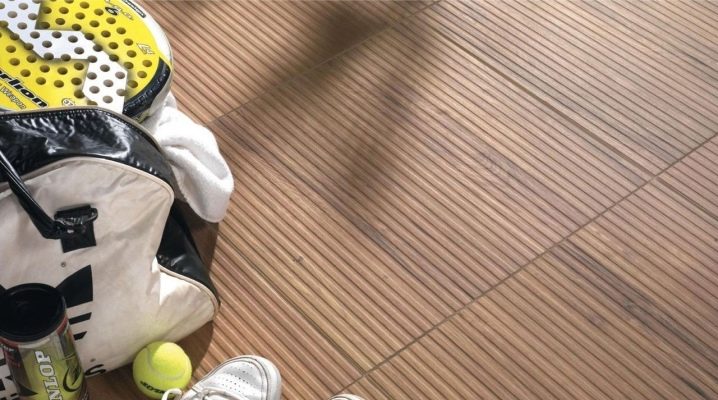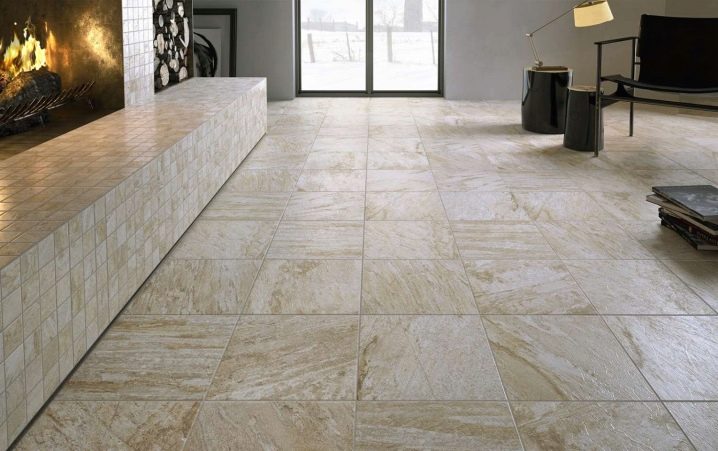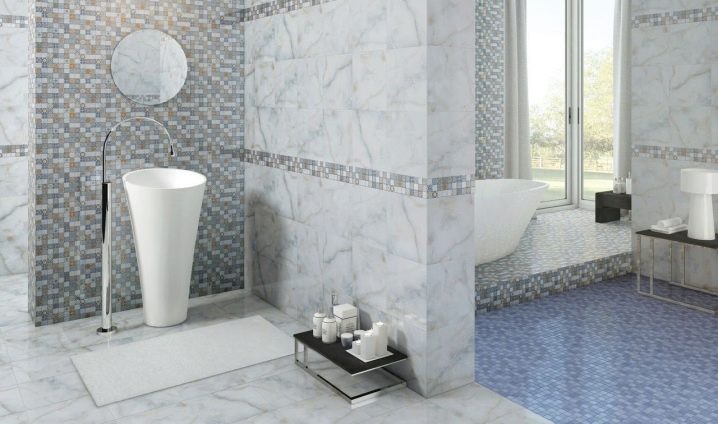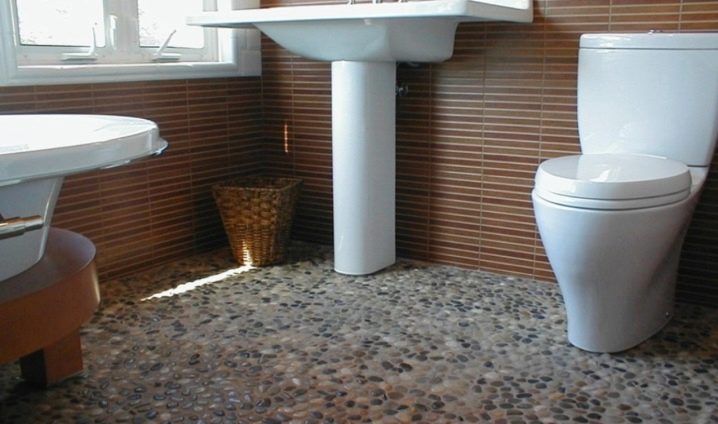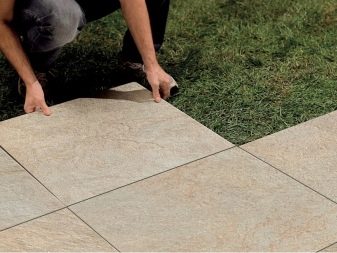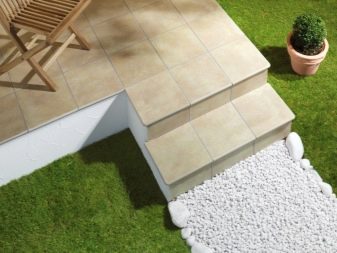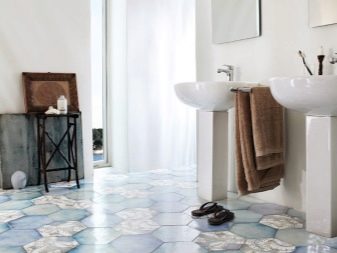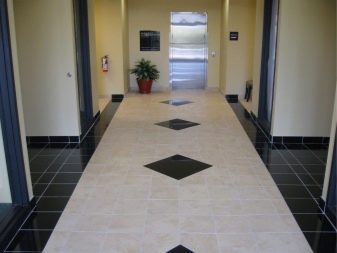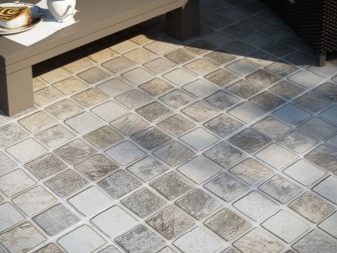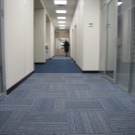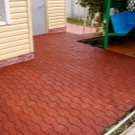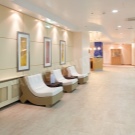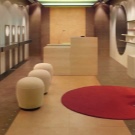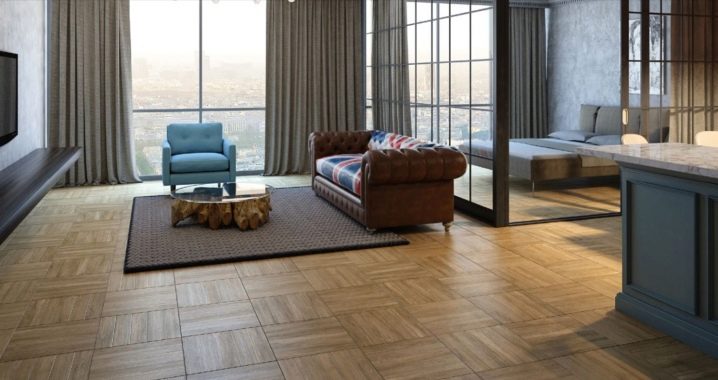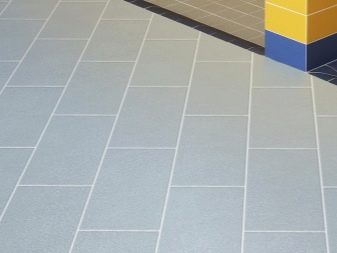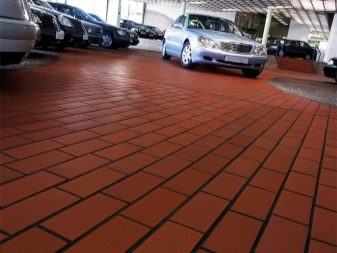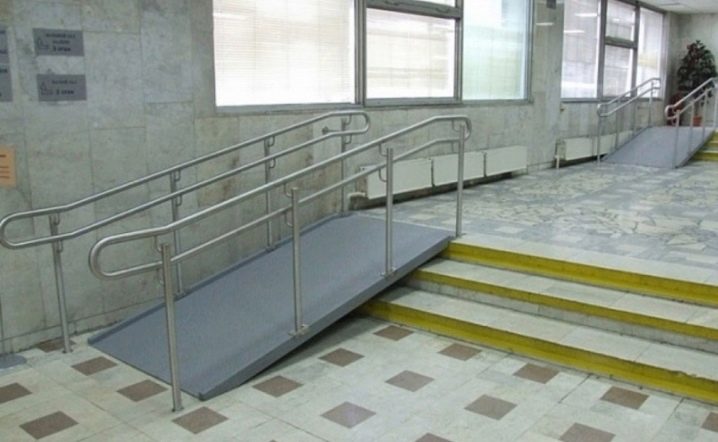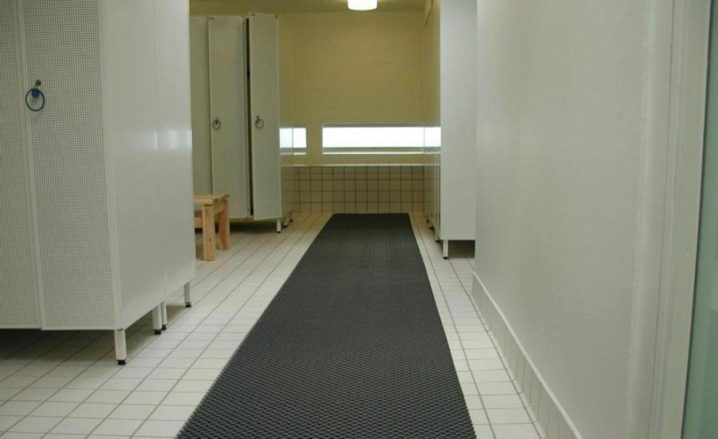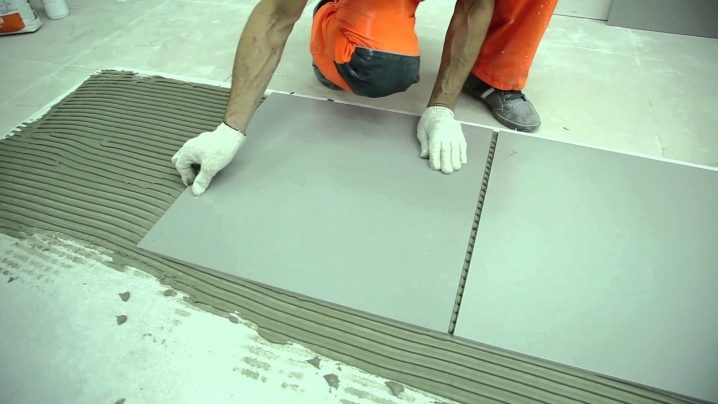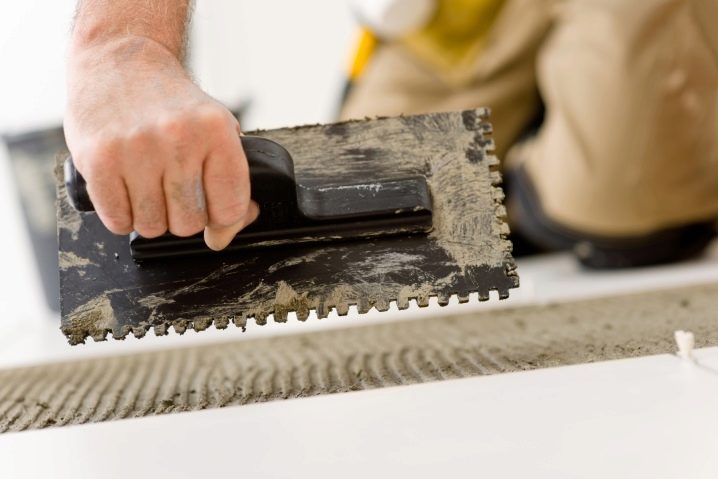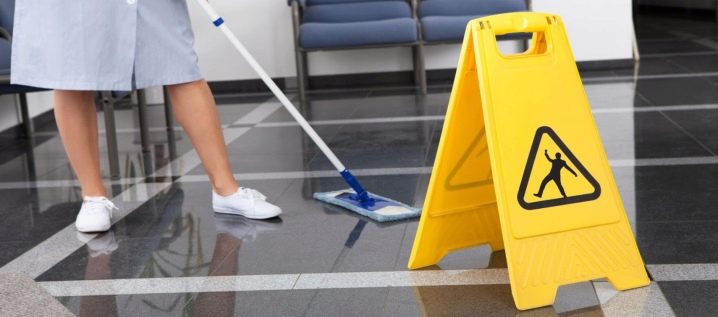Non-slip floor tiles: features of choice
Ceramic tile has one major drawback - it is often slippery, especially when wet. Modern manufacturers have managed to solve this problem: a non-slip tile that quickly gained popularity among homeowners and large developers has emerged in the assortment of tile material. We understand the features of her choice.
Anti-slip tile (anti-slip) is a ceramic product with a special surface, which even when wet, provides good adhesion to shoes or leather (when walking barefoot).
Anti-slip effect is achieved by various methods:
- By applying notches, protrusions and irregularities, creating a relief, slightly rough surface.
- Using a special coating that is applied to the glazed surface of the tile. Chemical compositions applied to ceramics form a thin, rough film with small cavities acting on the principle of suction cups.
Each of these methods allows you to increase friction and contributes to a better removal of excess moisture from the floor surface.
Categories
Anti-slip cladding material has the designation "Grip" on the package, which allows you to identify and select it when choosing.
Moreover, the entire range of non-slip floor tiles is divided into 3 categories:
- Mosaic - products up to 100 mm in size. When laying it, a large amount of grout is used, which increases the coefficient of adhesion of the feet (with or without shoes) to the floor.
- Standard - tiles with dimensions not exceeding 300x300 mm. On such products, in addition to roughness, they can create three-dimensional patterns, imitating a pebble or granular surface.
- Porcelain tile with a matte surface. This type of floor material is considered the most durable and safe, it can be used for facing indoors and outdoors (for paving walkways or facing steps).
The porcelain stoneware anti-slip tile can be quite small (150x250 mm) and quite large (600x1200 mm).
Scope of use
Non-slip cladding material has a wide range of applications. Most of the tiles are used indoors or under sheds, but there is one that is perfect for use in open spaces.
Most often, non-slip ceramic tiles are needed when finishing:
- bathrooms and showers;
- hallways;
- balconies and terraces;
- premises summer kitchen.
Porcelain tile found application when facing:
- hallways, corridors, balconies in apartments and houses;
- house territories, staircases, ramps and patios;
- hospital and sanatorium facilities;
- catering;
- retail and utility areas in stores;
- office space;
- hotel and entertainment complexes.
This type of lining is also used in other areas (wherever it is necessary to comply with increased safety measures or there is an increased risk of injury).
Classification
Types of non-slip ceramic tiles are distinguished by the degree of adhesion of the floor to the surface.The official designation of this parameter is the index R, denoting the angle of inclination at which the anti-slip qualities of the tile are preserved:
- R9. This marking has a non-slip floor tile with an angle of inclination from 6 to 10. This material can be used in residential premises and in many public institutions.
- R10 - with a tilt angle of 10-19. It is suitable for use in sanitary and kitchen premises of the public catering sphere, as well as for flooring in garages.
- R11 - with an inclination from 19 to 27. It is applied at registration of a floor in industrial refrigerators and dry-cleaners.
- R12 - tiles with an angle of inclination from 27 to 35. Facing material used in industrial kitchens, medical institutions and production workshops.
- R13. Special anti-slip tiles with an angle of inclination of more than 35, designed for use outdoors.
This type of marking is used for plate material, which is used for footwear.
Products used for rooms that go barefoot have a different classification and are divided into three types:
- Type A - a tile with an angle of inclination to 18. It is placed in medical institutions and changing rooms (where visitors often go barefoot).
- Type B - products with a slope of up to 24.Used in showers and areas located near the pools.
- Type C - facing material with a maximum angle of inclination. Suitable for finishing steps in the pool and sloping surfaces.
Anti-slip plate elements are classified by the number of embossed profiles on the product.
You can learn more about the types of non-slip tiles and its features from the following video.
Rules for styling and care
In general, the rules for laying ceramic tiles do not change regardless of their type.
In this non-slip tile has some installation features:
- Preparation for laying anti-slip ceramic material is made as usual: the surface is cleaned from the previous coating, dirt and dust, as much as possible level and thoroughly dried.
- Considering the fact that non-slip elements are mainly used in rooms with high humidity, glue and grouting are selected. The choice of grout depends on the type of room in which the installation is made. The glue is chosen depending on the type of tile material, for example, for porcelain stoneware, a composition with higher adhesive properties (at least 28 kg / cm2) is required.
Failure to comply with these requirements may lead to the fact that after a short operation tile will begin to fall off.
- Since porcelain stoneware products have low water absorption capacity, the glue is applied all at once, after which it is evenly distributed over the surface with a notched trowel.
- When laying the plates on the floor it is impossible to strongly press them so that the glue does not squeeze out.
- The adhesive composition dries up to 48 hours, after which it is done grouting the tile joints.
- After completing the entire installation procedure, the floor should dry and harden for 4 days. All this time it is undesirable to walk on its surface.
As for the care of the coating of anti-slip plates, it consists in regularly wiping the surface with a damp cloth. Grease stains from such a floor can be easily removed with the help of special cleaners, or with water with the addition of powder or dishwashing liquid. To remove heavy contamination, you can use a hard brush and household chemicals.
